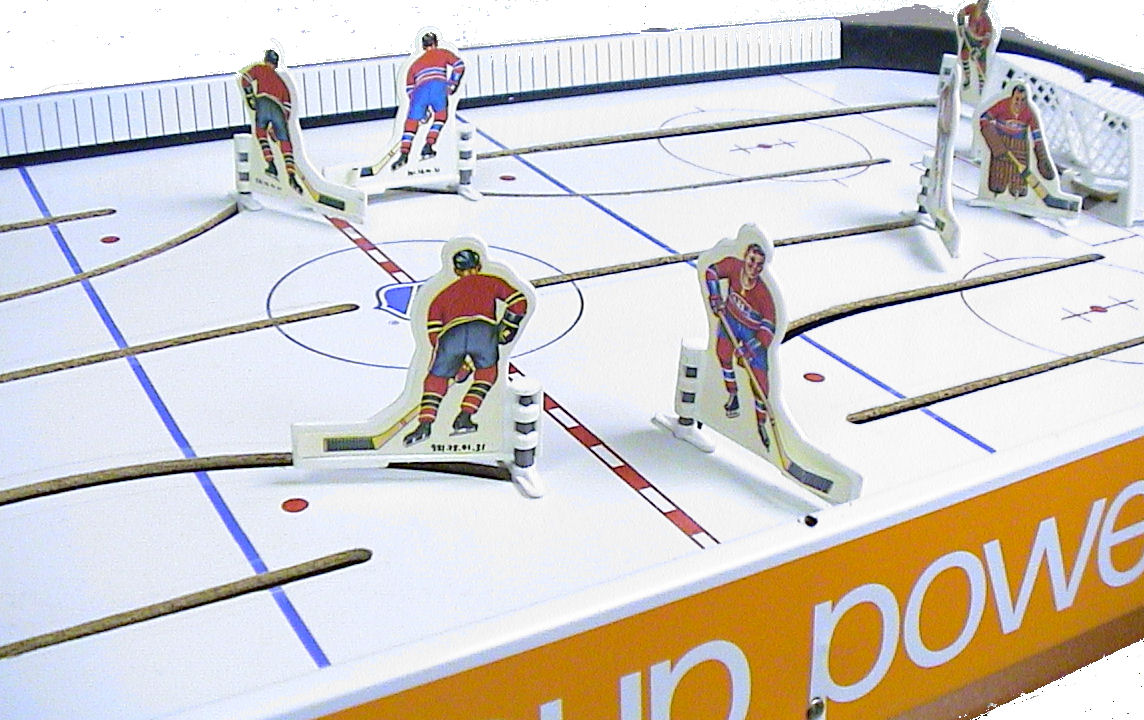Plouffe indicated that mechanical hockey games were the most common type found in his research. He found 80 variations, many of which required the use of a table or table-height supporting devices.
He reported that what most of these games have in common are rods or lever mechanical devices which enable a game player to move a component so it would hit an object on the playing surface.
The Museum has two such examples of these games in the collection, one donated in 1981, and a newer version donated in 1998. Both are titled Stanley Cup Power Play Hockey.
The "Cup" is the major trophy awarded by the National Hockey League (NHL) to the highest scoring team in the League each year. First donated in 1892 by Lord Stanley for use in Canada, the cup may now be awarded to any team in the League throughout North America since the League currently includes teams from both Canada and the United States.
The photograph above is of the box that houses the game. The box is 93.5cm long x 45.8cm wide x 39cm deep. This edition of the game was distributed by Coleco Canada Limited, Montreal.
The game board itself (pictured below) is made of wood, plastic, metal, and paper. It is 90.5cm long x 44.5cm wide x 35.5cm deep. The players are die cut painted paper over plastic and vary from 6.5cm x 6.6cm. The plastic nets are 11.7cm x 4.9cm x 5.8cm.
The game comes with 2 circular black hockey pucks approximately 1cm x 1.2cm. Also included is a plastic replica of the "Stanley Cup", which is about 9cm high x 4cm in diameter at the top.

The game is played by each of the payers turning, twisting, and moving assigned rods in and out on each end of the board to control their players on the board so they can hit the puck and score against the other team.
Last update March 10, 2010